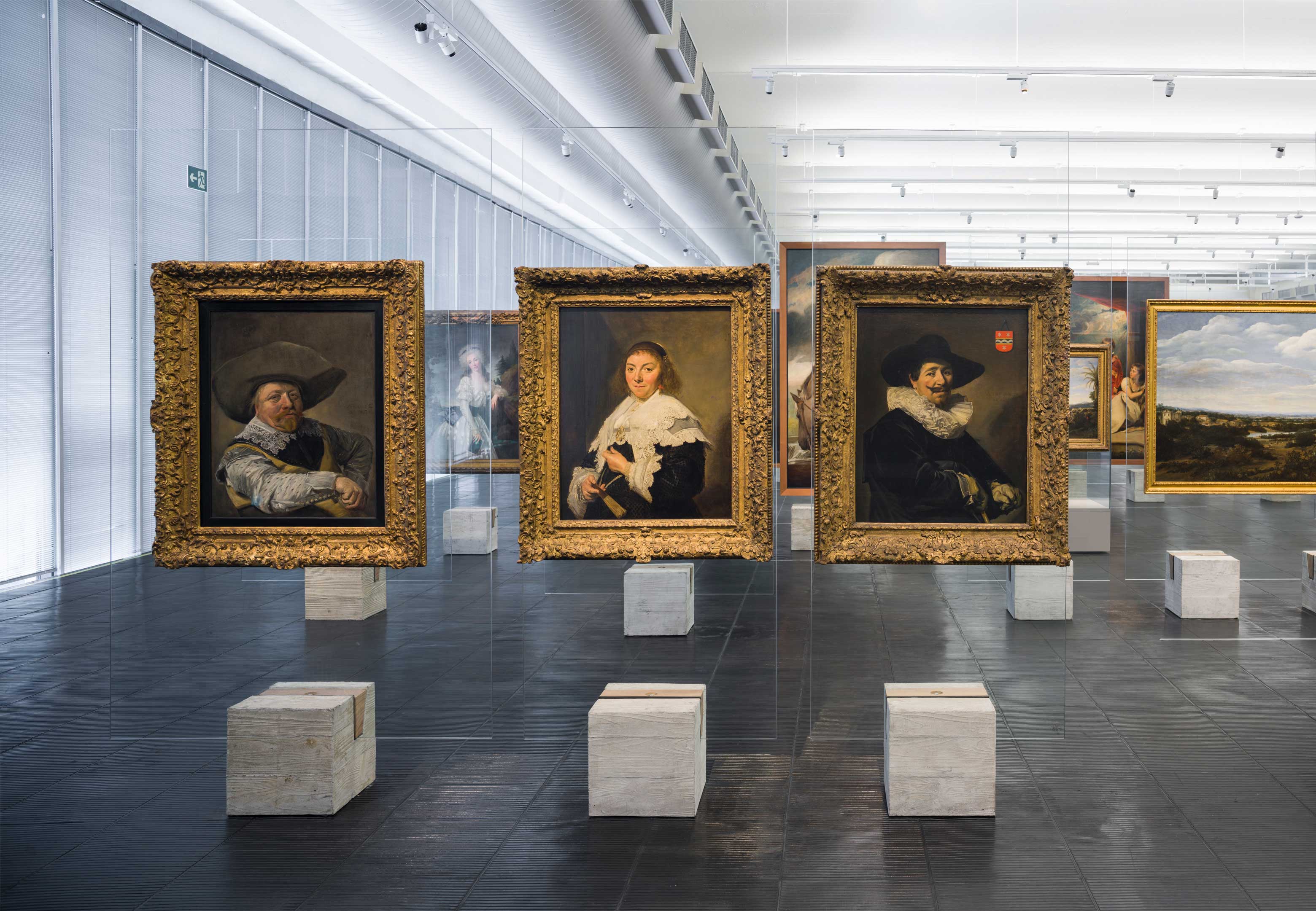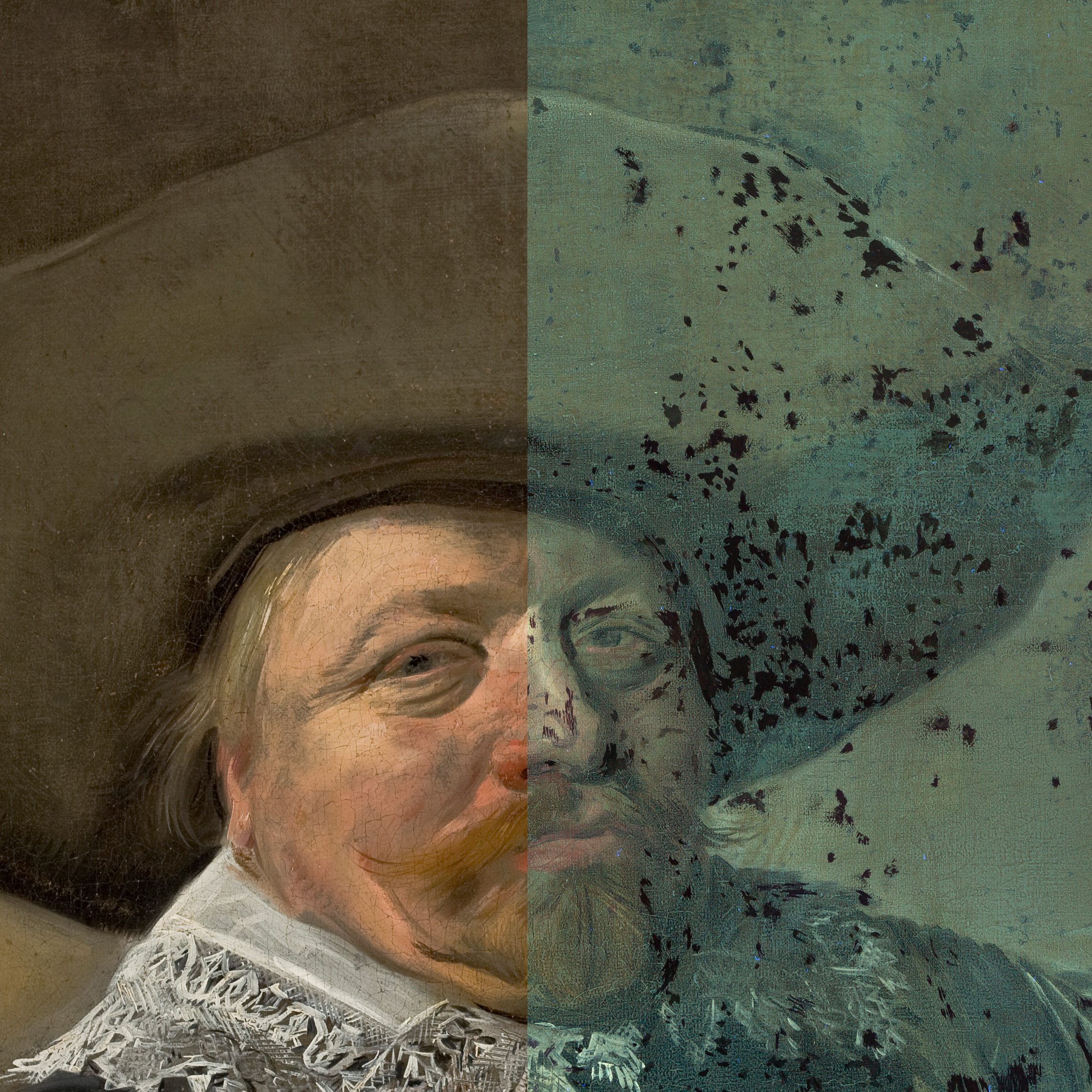MASP’s current Conservação e Restauro [Conservation and Restoration] studio was set up in 1992 by the painting restorer Eneida Parreira, through a project sponsored by Fundação Vitae. At the time, the studio had modern equipment, aimed at the restoration of paintings on canvas, through studies and research based on the most relevant museums in the world.
In 2000, with the restructuring of MASP’s building, the restoration studio was expanded to better meet the Museum’s demands. To this day, the center has equipment for studying works considered modern for Brazil, such as the infrared reflectography device that allows the visualization of the underlying drawing of a painting, or the Leica binocular magnifier that is considered crucial equipment for superficial analyses of artworks.
Since 1990, MASP regards as essential actions the exchange and partnering with the world’s leading museums, either to update knowledge or to restore the Museum’s works.
FUNCTIONS OF THE CONSERVATION AND RESTORATION DEPARTMENT
The Departamento de Conservação e Restauro [Department of Conservation and Restoration] of MASP is responsible for preserving, conserving, and restoring the works belonging to the Museum’s collection, as well as providing conservation assistance for temporary exhibitions from other museums or institutions. Considering that the Museum’s works are stored, exhibited, and transported following international museum norms, the Departamento de Conservação e Restauro plays a significant role in preventive conservation, security, and handling of the collection.

Between 2021 and 2022, MASP’s Department of Conservation and Restoration, sponsored by the Dutch multinational company AkzoNobel, has carried out the analysis and restoration of three works by the Dutch painter Frans Hals. Belonging to the MASP collection, the works can be dated to the 1630s and were donated to the museum as a set in 1951. The initiative is a partnership between the Frans Hals Museum in Holland and two Brazilian institutions: the Institute of Physics at the University of São Paulo (IFUSP) and the Federal Institute of Education, Science and Technology in Rio de Janeiro (IFRJ). The entire process is supervised by an international scientific board consisting of specialists from different museums.
The project is split into two phases. The first phase included a series of scientific analyses that revealed relevant aspects of the painter’s technique, resulting in a detailed diagnosis, which has been fundamental for the suitable treatments proposed. The second phase will include the works’ conservation and restoration, which will be carried out by the MASP team, alongside the Frans Hals Museum’s painting conservator Liesbeth Abraham. At the end of the project, the three artworks will be exhibited in the museum’s glass easels, making them fully accessible to the public.
Watch the documentary video about the results of the project´s first phase.

MASP RELEASES THE 2nd VIDEO OF THE FRANS HALS PROJECT, marking the conclusion of the process of analysis and restoration of three works by the Dutch painter dating from the 1630s and donated together to the museum in 1951.The initiative, which started in 2022, was carried out by MASP's Conservation and Restoration nucleus, sponsored by the Dutch multinational company AkzoNobel. The action took place in partnership with the Frans Hals Museum, from the Netherlands, the Institute of Physics of the University of São Paulo (IFUSP) and the Federal Institute of Education, Science and Technology of Rio de Janeiro (IFRJ).
The execution was carried out in two phases. The first, carried out in 2022, resulted in a detailed and fundamental diagnosis for the elaboration of an adequate treatment plan.
During the second phase, conservation and restoration treatments were carried out on the works by the MASP team, alongside the conservator-restorer of the Frans Hals Museum, Liesbeth Abraham.
As a result of the project, the three restored works return to the glass easels, being once again incorporatedinto the long-term exhibition Acervo em transformação [Permanent Collection in Transformation], with access by all museum visitors. In addition to the presentation of the works, it is possible to see details of the project in the launch of the new video about the results of the second and last phase.
CLIQUE PARA ASSISTIR
Virgem com menino, São João Batista criança e um anjo [The Virgin and Child, Saint John the Baptist, and an Angel], 1500–1510
After one year of restoration, Piero di Cosimo’s painting Virgem com menino, São João Batista criança e um anjo (1500–1510), from the MASP collection, was presented to the public at the Galleria Nazionale d’Arte Antica di Palazzo Barberini, in Rome. Resulting from a partnership among MASP, the Soprintendenza SPSAE, and the Polo Museale della Città di Roma, and the private sponsorship of Inácio Bittencourt Rebetez, the restoration of the work from the Museum’s collection was carried out by the restorers Karen Barbosa (from MASP) and Paola Sannucci (from the Soprintendenza di Roma). The painting was exhibited at Palazzo Barberini and will be sent to the National Gallery of Art in Washington, where it will be part of a show about Piero di Cosimo.

A set of 33 maiolica ceramics, from the fourteenth century, originating in the Orvieto region, and belonging to the MASP collection, were borrowed to take part in an important exhibition in Perugia, Italy, in November 2009. In return, MASP requested the restoration of the ceramics that needed repair. The works are being restored in the laboratories of the Soprintendenza per i Beni Storici e Artistici dell’Umbria.

Himeneu travestido assistindo a uma dança em honra a Príapo [Hymenaios Disguised as a Woman During an Offering to Priapus]:
The painting was restored as part of the Year of France in Brazil, sponsored by CNP Assurances and Caixa Seguros, in partnership with the Louvre Museum and the C2RMF (National Centre for Research and Restoration in French Museums). The restoration was carried out in MASP’s restoration studio from January to August 2009, by the restorer Regina da Costa Pinto Dias Moreira (from the Louvre Museum), the support restorers Jean-Pascal Viala and Emmanuel Joyerot (also from the Louvre Museum), counting on scientific analyses coordinated by the radiologist Elisabeth Ravaud (from the C2RMF).

São Jerônimo penitente no deserto [Saint Jerome Penitent in the Desert]:
A fifteenth-century panel restored in the Louvre Museum, in return for a loan. The painting had been requested to take part in a relevant exhibition by Andrea Mantegna at the French museum. The very delicate work needed restoration, and its care was then kindly agreed upon and carried out in exchange for the loan.

O artista [The Artist]:
Painting restored at the Louvre Museum in exchange for a loan.

As tentações de Santo Antão [The Temptation of Saint Anthony]:
Bosch’s major work had been restored at the Getty Institute in a Getty/MASP partnership program. In the 1990s, the then-head of Getty’s painting restoration, Andrea Rote, visited MASP to analyze the state of conservation of the Museum’s main works. Some works were gradually sent to Getty to be restored at their own facilities in Los Angeles, fully sponsored by the Institute. In exchange, the works remained on display at Getty for approximately three months, when they would return to MASP.

A Ressurreição de Cristo [The Resurrection of Christ]:
The painting by Rafael, requested on loan by the National Gallery in London, was thoroughly analyzed and studied by the scientific department of the English museum. Infrared reflectography was performed, revealing some of the artist’s regrets still at the sketching stage.
